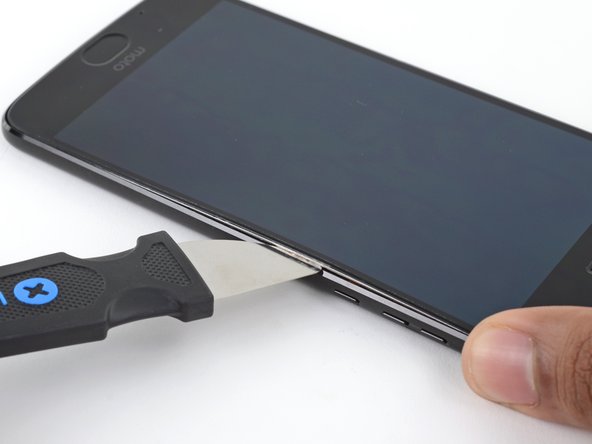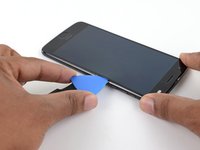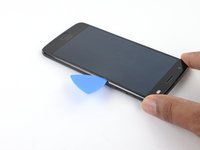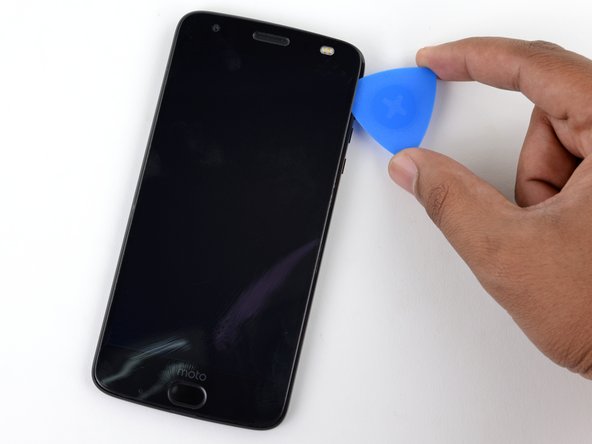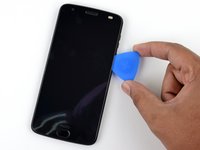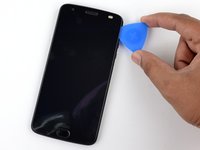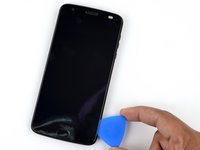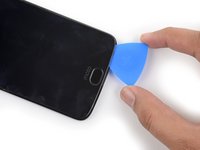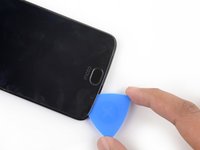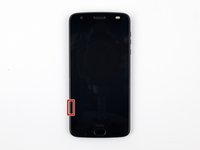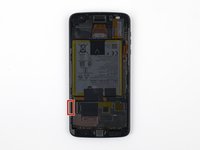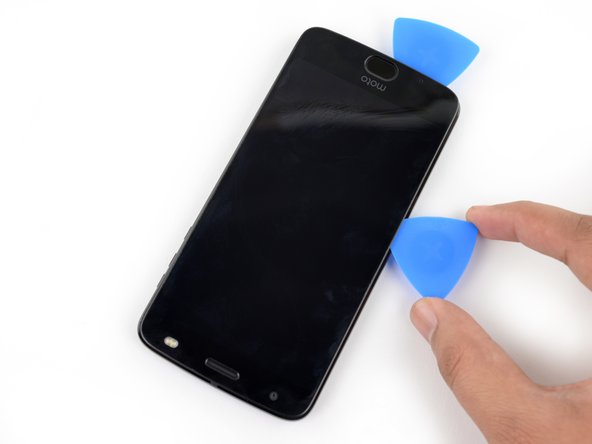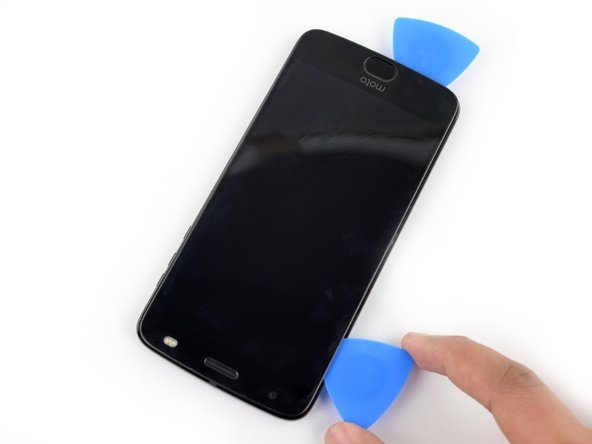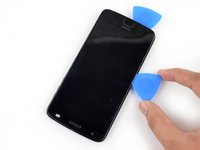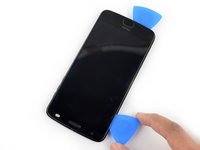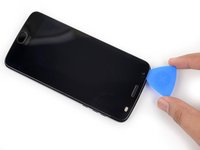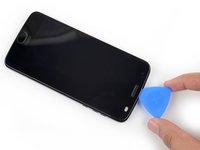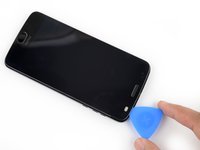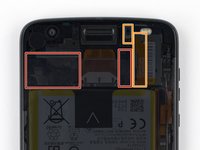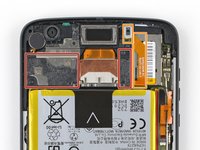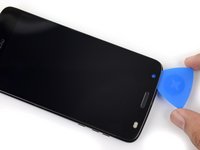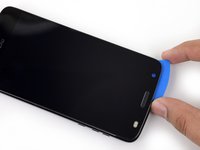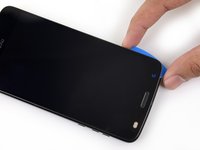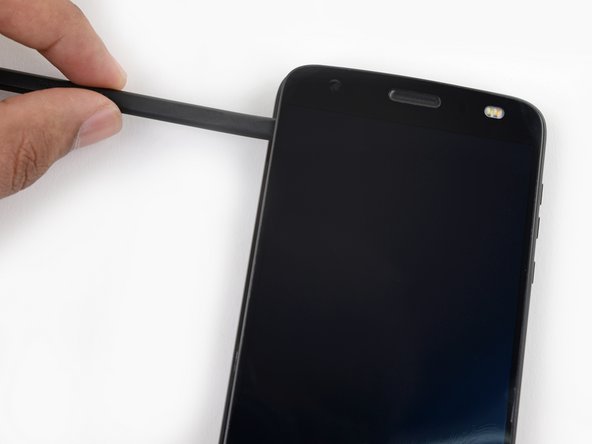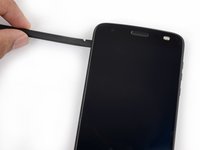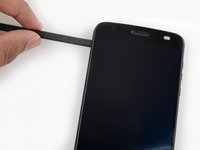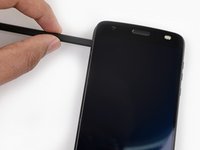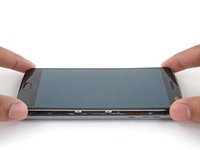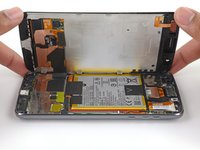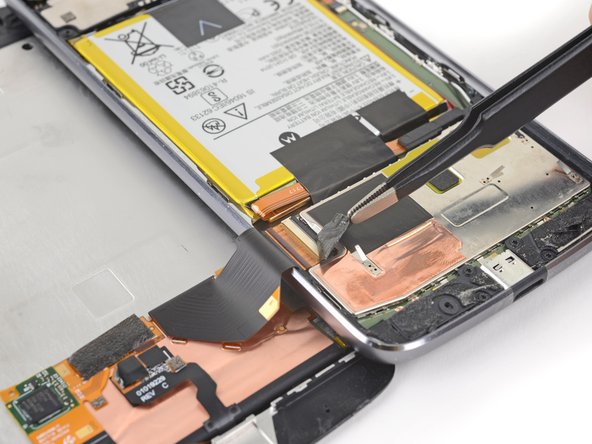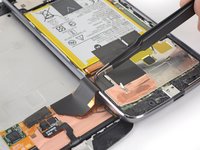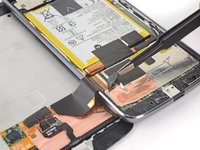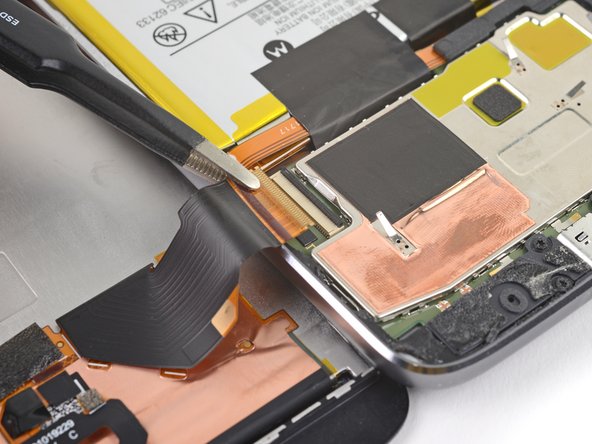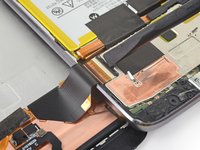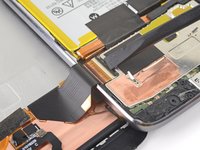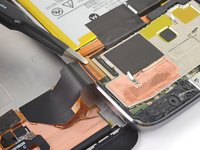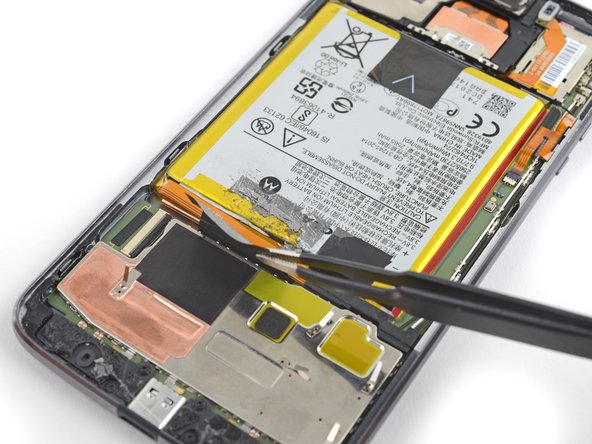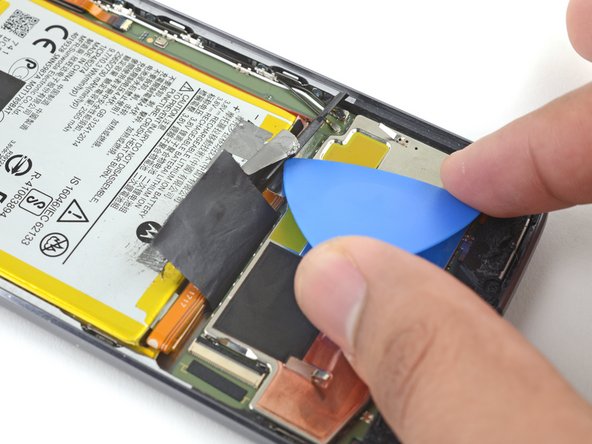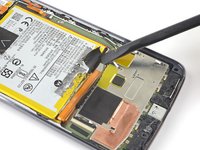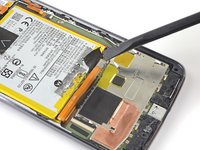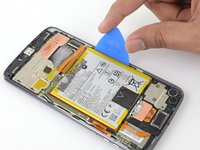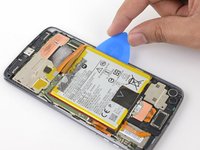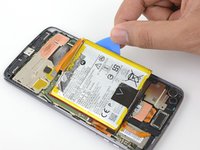Diese Übersetzung enthält möglicherweise noch nicht die neuesten Änderungen der Original-Anleitung. Hilf mit, die Übersetzung zu aktualisieren oder sieh dir die Original-Anleitung an.

Motorola Moto Z2 Force Akku tauschen
Einleitung
Zu Schritt 1 der AnleitungNutze diese Anleitung, wenn du Probleme mit dem Akku des Motorola Moto Z2 Force hast und ihn austauschen willst. Wenn dein Akku aufgebläht ist, musst du
entsprechende Vorsichtsmaßnahmen treffen.
Achtung: Die Displayeinheit dieses Handys besteht aus einem starren Mittelrahmen und einem flexiblen Display aus Plastik, das während des Zerlegen brechen könnte. Zusätzlich kann zu Blasen und Verfärbungen auf dem Display führen, was kaum zu reparieren ist. Wenn du die Displayeinheit wiederverwenden willst, beachte alle Hinweise und pass auf, dass das Display nicht zu heiß wird.
Was du brauchst
Fix Kit
Dieses Kit enthält alle Ersatzteile und Werkzeuge, die für die Anleitung benötigt werden.
Ersatzteile
Werkzeuge
Mehr anzeigen …
-
-
Wenn du die Displaykanten vom Rahmen entfernst, musst du fünf Clips aus Metall lösen, die das Display halten.
-
Drei Clips sind auf der linken Seite, drei auf der rechten.
-
Du musst dich mit dem Plektrum um diese Clips herumarbeiten, um sie ganz zu lösen.
-
Entweder fährst du mit dem Plektrum vorsichtig um die Clips herum oder du lässt ein Plektrum auf einer Seite des Clips stecken und arbeitest mit einem anderen Plektrum auf der anderen Seite weiter.
-
-
-
Setze einen Jimmy oder ein anderes Metallwerkzeug zwischen der rechten Seite des Plastikdisplays und dem Rahmen nahe an den Seitentasten des Smartphones ein.
-
Kippe den Jimmy nach unten und drücke ihn gleichzeitig tiefer in den Spalt hinein, so dass die rechte Seite der Displayeinheit hochgehebelt wird.
No — *slaps wrist* No. Bad steps! Don’t use the suction cup at all, ever. It causes the two layers to separate immediately, long before the frame clips give way to let the screen come off.
I’m being super ultra very careful with this second attempt on a new device (that was in pretty pristine condition, if I can keep it that way!), and right when I tried pulling as instructed, the screen layers started to pull apart. Use a blade shoved into the edge of the phone and pry it apart, releasing the latches in the process!
I have to agree with Matt above. At the smallest bit of pressure on the suction cup, the screen de-laminated from the metal base. It still “works”, but….
None of the tools in the kit is terribly suited for getting in there and prying that clip apart without splitting the screen.
lease Read the Comments poste on “STEP 2”, When you apply the heat, the screen becomes unglued from the metal fram that it is attached to. I ended up damaging my screen. You need to make sure that what is coming unglued is the metal, and not just the plastic screen. I found out when I saw another video, where they do not apply heat, they just use a tool to pry the frame-display assembly… But apparently it was too late… You should be more specific about the warning…
A jimmy does not come with the kit. Buy one before beginning this procedure. It is the best way to lift the screen assembly without damaging the assembly.
This whole guide has been rewritten since my last comment, and I super appreciate it. The steps are now much more appropriate and less likely to cause damage. Jamming your Jimmy (huehue) into the edge of the screen is actually quite a good idea, not likely to hit anything as there’s nothing but body underneath it.
-
-
-
Lasse zunächst den Jimmy stecken und setze ein Plektrum unter den silberfarbenen Mittelrahmen an der gleichen Stelle über den Jimmy ein.
-
Entferne den Jimmy.
-
-
-
Schiebe das Plektrum an der gesamten rechten Kante entlang, um die Clips und den Kleber zu lösen.
this is really for the digitizer and screen replacement. there are still more steps for just the screen.
There is an enormous amount of adhesive sticking this thing together. As the adhesive is not essential (it holds together with clips, mostly), you really need to focus on *removing* the adhesive, so that it doesn’t stretch and bunch-up, preventing clean reassembly. Leave behind the adhesive that you can prevent from bunching-up (by cleanly breaking it, in turn by holding down one edge to the phone or screen), so you have some sticky left, but just make sure it’s not bunched-up.
Revisiting this comment a year later: there’s now replacement adhesive available (or maybe there always was - wish I knew!) for this model in the iFixit store. So, it would be best to remove the adhesive whereever you see it, cleaning everything up and preparing for the new adhesive. That darn adhesive in step 9 below, though… ugh. Work slow, don’t expect it to all be apart by this point.
-
-
-
Wenn die rechte Kante komplett abgelöst ist, dann schiebe das Plektrum um die rechte untere Ecke des Gerätes herum, bis es unter der Unterkante der Einheit steht.
-
Schiebe das Werkzeug unter der Unterkante des Smartphones entlang, wobei du den Kleber auftrennst und die Plastikrasten öffnest.
-
Lasse das Werkzeug unter der Unterkante der Displayeinheit stecken, so dass sie nicht wieder festkleben kann. Benutze für den nächsten Schritt ein neues Werkzeug.
-
-
-
Wenn du dich an die linke Seite machst, achte darauf, dass du das Displaykabel nahe des unteren Endes nicht beschädigst.
-
-
-
Setze ein weiteres Plektrum an der Unterkante ein und schiebe es um die linke untere Ecke des Gerätes herum, so dass es unter der linken Seite der Einheit steckt.
-
Schiebe das Plektrum an der linken Seite entlang. Löse dabei alle Metallclips und den Kleber, mit denen die Displayeinheit befestigt ist.
-
Achte wie vorher darauf, dass wirklich die drei Clips geöffnet werden, so dass die Einheit komplett abgelöst wird.
-
-
-
Schiebe dein Werkzeug unter Oberkante der Displayeinheit entlang und trenne dabei den Kleber auf.
-
-
-
-
Es gibt zwei große Klebeflächen, die das Display an der oberen Kante festhalten, größer als die 4 mm, die du schon durchgeschnitten hast.
-
Die Sensoreinheit und die Kabel liegen über und rechts der rechten Klebefläche, weshalb du sie beschädigen könntest, wenn du versucht, den Kleber von dort zu lösen. Die folgenden Schritte zeigen dir, wie du den Kleber von der linken Seite aus löst.
This is a tricky part. See the biggest red-squared section in the photo above? That part always wants to detach — the adhesive to the screen is stronger than the molding that holds the metal into the plastic. The metal will detach from the plastic pretty easily, and there’s no way to get that metal back into the plastic frame (as it seems to have been molded as a single part). So, the adhesive is a booby-trap.
To defuse the booby-trap, heat the heck out of it, insert one end of tweezers (or perhaps a spudger) from the right side, hold the metal plate down, and verrry slooowwly convince the adhesive to separate. At some point, it’ll start cascading and snap free.
The metal finger area, between the two red squared sections above, also is a problem area — it’s latched into a frame above the battery, and those latches can get pulled up on top of the frame, preventing the phone from reassembling clean and flat. Make sure to re-insert those tabs so that little edge with the metal fingers sits flat and proper.
-
-
-
Träufle etwas hochkonzentrierten (mehr als 90%igen) Isopropylalkohol unter die linke Kante der Displayeinheit oben am Gerät.
-
Lasse das Gerät etwa fünf Minuten lang senkrecht auf der rechten Seite stehen, so dass sich der Alkohol verteilen und einwirken kann.
-
-
-
Schiebe ein Plektrum so tief wie möglich unter obere die linke Ecke der Displayeinheit, um die linke Klebefläche aufzuschneiden.
I found that a plastic card inserted from the left side, and worked with a sawing motion, between the screen and the adhesive worked great after the adhesive was softened by the alcohol.
-
-
-
Schiebe das flache Ende eines Spudgers langsam und vorsichtig unter die linke Kante der Displayeinheit. Schiebe ihn vorsichtig weiter, um die obere Kante anzuheben und die rechte Klebefläche zu zerschneiden.
-
Bringe mehr Alkohol auf, wenn dies nötig ist. Achte aber darauf, dass es nicht zu viel wird, denn er könnte sonst auch den Kleber an unerwünschten Stellen auflösen. Lasse den Alkohol etwas einwirken, bevor du weiterarbeitest.
Again, pay careful attention to the strong block of adhesive sticking the display to a metal shield that’s molded into the plastic frame - the adhesive strength is quite likely to pull out the metal shield from the plastic frame and there’s no going back from that. Not as catastrophic as ripping a ribbon cable, but still pretty bad. See my comment a couple photos up about that.
I added some alcohol directly to the adhesive patches on this side of the phone and waited a couple of minutes before continuing with this step.
-
-
-
Hebe das Display an der rechten Kante an und klappe es nach oben, weg vom Telefon. Das Display ist an der unteren linken Kante noch mit dem Telefon verbunden, entferne es also noch nicht ganz.
-
Falls das Display noch festklebt, erhitze und zerschneide den Kleber an den notwendigen Stellen nochmal.
Do this only after slicing all the little ribbons of adhesive that hang around - and clean up any gummed-up, bunched-up strands of adhesive after removing it. I worked at detaching adhesive until the screen was totally free, only held by the ribbon cable, before moving on from this step.
-
-
-
Benutze eine Pinzette, um den schwarzen Klebestreifen über dem Anschluss für das Displaykabel zu entfernen.
-
-
-
Nutze die Spitze eines Spudgers, um den Verschlussbügel der ZIF Verbindung umzulegen.
-
Ziehe das Flachbandkabel mit einer Pinzette aus dem Anschluss heraus.
-
-
-
Entferne die Displayeinheit.
When reconnecting the display ribbon I found it much easier if you straighten out major 45/90 degree bend that is in the middle of the ribbon until the entire ribbon is all unbent and in parallel with the display face. You will then have a straight shot into the connector without having to hold the display at a 90 degree angle to the chassis and then having to look around, over or through the display to (and if luck is with you) find, lineup and insert the ribbon into the connector. You have to do a little in 3 dimensional thinking to re-bend the ribbon and line the display back up with the chassis but if you’ve made it that far then you should have no problems. Don’t bend the ribbon back and forth too many times.
-
-
In diesem Schritt verwendetes Werkzeug:Tesa 61395 Tape$6.99
-
Benutze eine Pinzette, um die beiden Stücke schwarzes Klebeband abzuziehen, die den Akku halten.
-
-
-
Löse die kleine schwarze Halterung, die den Akkuanschluss bedeckt, mit einem Plektrum. Die Halterung ist ein bisschen festgeklebt.
-
Entferne die Halterung mit deinen Fingern oder einer Pinzette.
-
-
-
Löse den Akkuanschluss mit der Spitze eines Spudgers: Heble ihn gerade nach oben und trenne ihn.
-
-
-
Lege einen frisch erhitzten iOpener auf die Rückseite des Telefons, dort wo der Akku sitzt, und erhitze es für zwei Minuten, um den Kleber unter dem Akku aufzuweichen.
-
Alternativ, träufle etwas hochkonzentrierten Isopropylalkohol (>90%) unter jede Ecke des Akkus, damit der Kleber aufgeweicht wird.
-
-
-
Setze ein Plektrum oder eine Plastikkarte an die linke Kante des Akkus ein. Wir verwenden hier ein Plektrum, eine Plastikkarte ist sicherer (wenn auch langsamer).
-
Übe gleichmäßigen und konstanten Druck aus, um den Akku langsam hochzuheben.
-
Versuche, den Kleber zu lösen, ohne den Akku zu verformen. Falls der Akku sich doch verformt, heble langsamer oder mache ihn nochmal warm/träufle mehr Alkohol auf den Kleber. Manchmal sind mehrere Anläufe nötig.
-
Bewege dein Werkzeug langsam unter den Akku und heble weiter, bis er sich komplett vom Kleber gelöst hat.
-
-
In diesem Schritt verwendetes Werkzeug:Tesa 61395 Tape$12.99
-
Entferne den Akku aus dem Telefon.
-
Vergleiche das Neuteil mit dem Originalteil. Möglicherweise musst du vor dem Einbau des Ersatzteils fehlende Komponenten übertragen oder Schutzfolien entfernen.
Um dein Gerät wieder zusammenzubauen, folge den Schritten dieser Anleitung in umgekehrter Reihenfolge.
Nach Abschluss dieser Anleitung solltest du deinen neu eingebauten Akku kalibrieren. Lade ihn auf 100% und lasse das Handy für mindestens zwei weitere Stunden am Ladegerät. Dann nutze es, bis es von alleine ausgeht. Danach lade es ohne Unterbrechung wieder voll auf.
Bitte entsorge deinen Elektroschrott fachgerecht.
Hat die Reparatur nicht ganz geklappt? Guck in unserem Antwortenforum nach Lösungen.
Vergleiche das Neuteil mit dem Originalteil. Möglicherweise musst du vor dem Einbau des Ersatzteils fehlende Komponenten übertragen oder Schutzfolien entfernen.
Um dein Gerät wieder zusammenzubauen, folge den Schritten dieser Anleitung in umgekehrter Reihenfolge.
Nach Abschluss dieser Anleitung solltest du deinen neu eingebauten Akku kalibrieren. Lade ihn auf 100% und lasse das Handy für mindestens zwei weitere Stunden am Ladegerät. Dann nutze es, bis es von alleine ausgeht. Danach lade es ohne Unterbrechung wieder voll auf.
Bitte entsorge deinen Elektroschrott fachgerecht.
Hat die Reparatur nicht ganz geklappt? Guck in unserem Antwortenforum nach Lösungen.
Rückgängig: Ich habe diese Anleitung nicht absolviert.
17 weitere Personen haben diese Anleitung absolviert.
Besonderer Dank geht an diese Übersetzer:innen:
88%
Diese Übersetzer:innen helfen uns, die Welt zu reparieren! Wie kann ich mithelfen?
Hier starten ›
14 Kommentare
Anyone knows where to get the lcd glue/tape/adhesive?
I got everything out, got a new battery, the screen works but the touchscreen doesn’t, anyone had the same problem?
Wow! This guide is way, way improved vs last week’s version! Nice work, Tarun! I picked up a “bad IMEI” copy of my Z2 Force on eBay to replace the damaged screen, and I’ll step my way through this when transplanting the screen. Thanks!
Please Read the Comments poste on “STEP 2”, When you apply the heat, the screen becomes unglued from the metal fram that it is attached to. I ended up damaging my screen. You need to make sure that what is coming unglued is the metal, and not just the plastic screen. I found out when I saw another video, where they do not apply heat, they just use a tool to pry the frame-display assembly… But apparently it was too late… You should be more specific about the warning…
I saw that video (i think it’s the same) on youtube too and it is misleading. It looks like they already removed the screen and did a second take for the video. There is no way the screen can be removed without heat. My phone was bulging and separated on the left side which gave me room to put the pick in but the adhesive was too strong to continue removing the entire screen. Once I used the iopener the pick was able to separate the screen without issue. I just moved slowly and didn’t use too much force.
jon -
Worked great! Thanks for the instructions. One must be patient and work slowly to separate the screen from the frame and since the screen is plastic it’ll take the iopener longer for heat to conduct through to the adhesive. I initially used the 90 minute rule on the iopener instructions but that wasn’t enough. I reread the OP’s instructions and used the two minute rule which worked great.
Add to Instructions: Remove all adhesive, especially around the perimeter, using the spudger or tip prior to reassembly. It’s very thin so be diligent. If you’re not careful, you’ll end up doubling up tape and the screen won’t sit flush. The precut display adhesive pattern only applies to the perimeter so make sure to cut additional adhesive for the areas at the top and bottom. Compare the screen adhesive pattern and you can see what areas that need the additional adhesive.
I used aluminum foil tape to re-adhere the conductive tape to the new battery. This tape is used to seal ventilation ducts for furnaces and AC systems.
Worked but almost damaged my screen. I have just a small black spot on one edge, that does not affect usability. I didn't had to remove the main board to remove the battery. When the camera was disassembled, I had enough space to go under the battery carefully with the spudger step by step and removed it without bending the battery.
I agree that the plastic card is the best tool to use for lifting the battery. It worked great with 2 minutes of the iOpener and a little alcohol. I used a gentle blower to dry the alcohol before reassembly. I found the entire process took about 40 minutes from start until I had books sitting on the phone to anchor the display and the charger plugged in to bring the battery up for the calibration.
Thanks for this guide….everything appears to bee working after putting it all back together. Now to see if replacing the battery fixes the random “where’s the battery?” screens I was getting. Note: I have an iOpener but never used it. Used 99% alcohol a few times to loosen the adhesive and that did the trick. Thoroughly cleaned the old adhesive round the edges and tried to preserve the adhesive patches at the top. With the replacement adhesive in the battery kit…phone looks like it was never taken apart.
Old phone gets new battery and it is working fine. Everything went as described. Tip: be sure to read the extra comments for each step to make things even easier. The hardest part for me was breaking the adhesive grip tape that seals and secures the perimeter between the case and display. Suggest you take your time, working slowly as eventually they do separate with damaging anything.
Ive done the screen and battery. Have you guys encountered boot looping with replacing them?
And if so how did you fix the bootloop. Using oem battery. I do not want to hard wipe it

















